FL-LOWPA
FL-LOWPA Mission & Purpose
The Finger Lakes- Lake Ontario Watershed Protection Alliance’s mission is to encourage and coordinate watershed partnerships that result in the implementation of plans to protect and enhance water quality. FL-LOWPA’s purpose is thereby to protect, support, and enhance water resources by:
- promoting the sharing of information, data, ideas, and resources pertaining to the management of watersheds in New York's Lake Ontario Basin;
- fostering dynamic and collaborative watershed management programs and partnerships, public education programs; and
- emphasizing a holistic, ecosystem-based approach to water quality improvement and protection.
A major tenet of FL-LOWPA is grassroots programming. Water quality problems are defined and solutions are developed and implemented at the local level. Through participation in the Alliance, member counties develop a more regional perspective that informs local programming and encourages cooperation. There are currently 25 New York State counties that are wholly or partially in the Lake Ontario watershed. These 25 counties are divided into three regions which are interrelated by geography or shared watersheds.
The Water Resources Board (WRB) is the governing body of FL-LOWPA and is comprised of 1 voting member from each participating county, selected by local process. Members selected are often from multiple agencies including Soil and Water Conservation Districts, Planning and Health Departments, and Water Quality Management Agencies. The major source of funding for FL-LOWPA is provided through the New York State Environmental Protection Fund (EPF), through the support of a committed delegation of legislators representing the 25-county region and the Executive Office. Each county receives an equal share of funding to carry out water quality programming. In many counties, FL-LOWPA funds leverage additional monies through grants and local appropriations, typically estimated at over $2 million for each year of FL-LOWPA funding.
Wyoming County’s FL-LOWPA Program
FL-LOWPA’s programs are diverse and coincide with the majority of Wyoming Co. Soil and Water’s own goals and practices. FLLOWPA programs include: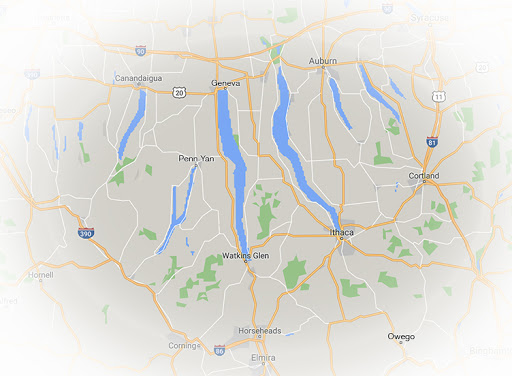
- Watershed Management and Planning
- Agricultural Best Management Practices
- Drinking Water Supply Monitoring and Protection
- Erosion and Stormwater Control
- Invasive Species Management and Eradication
- Habitat Restoration
- Septic System Inspections
- Public Education and Involvement
Wyoming County’s FL-LOWPA program has evaluated areas of concern within the county and how to best appropriate time and funding towards them. Wyoming County consists of the head waters for many of the tributaries flowing into the Genesee River that empties into Lake Ontario. Protecting these upper watersheds is a priority for Soil and Water and will help improve water quality locally and in downstream waters. In addition, the Wiscoy, East Koy and Oatka Creeks are highly prized trout streams and require specific water quality standards to sustain these fisheries.
Additionally, Wyoming County’s watersheds have intensive dairy and cash crop farming, with Wyoming County having the highest number of medium and large CAFOs in the state and the highest value of agricultural products sold in the state. Agricultural production can be a concern for water quality due to the potential for sediment, nutrient and pathogen runoff. Agricultural practices can also be associated with thermal changes due to irrigation withdrawals and lack of riparian vegetation. The hilly topography of Wyoming County also creates water quality concerns, as this contributes to high velocity streams and highly eroding streambanks and roadside ditches. The sediment loads associated with this erosion can reduce the size and quality of trout habitat and contribute to the sediment problems in the Genesee River. The sediment loads are also exacerbated by the lack of riparian vegetation planted along streams. Proactive management of stormwater from residential and commercials areas will be important to reduce runoff and improve water quality in the more highly populated areas. Finally, many homes are not served by municipal wastewater systems, and on-site septic systems are believed to contribute to water quality problems in some areas of the county.
Wyoming County’s FL-LOWPA program seeks to address water quality problems through multiple strategies. First, our program implements agricultural best management practices and erosion control practices to reduce specific sources of water pollution. Second, the program conducts educational programs to promote public involvement in water quality improvement and facilitates coordination amongst watershed groups, governmental entities, and private citizens to encourage effective and efficient watershed management. The Wyoming County Water Resources Coordinating Committee, a group of local watershed organizations, governmental agencies, and concerned citizens, guides the work the of the Wyoming County FL-LOWPA program by identifying water quality concerns and water quality improvement projects. All FL-LOWPA projects and the FL-LOWPA budget are discussed at the quarterly Water Resources Coordinating Committee meetings.
Divisions of Wyoming County's FL-LOWPA Program
Agricultural Best Management Practices: Agriculture is the top industry in Wyoming County. FL-LOWPA funds provide technical, engineering and financial assistance to agricultural producers for the installation of Best Management Practices (BMPs) for nonpoint source pollution control. Wyoming County Soil and Water Conservation District utilizes information collected as part of the Agricultural Environmental Management (AEM) program to identify BMPs to reduce nutrient and sediment runoff from agricultural sources.
Hydroseeding: The District’s Hydroseeder was purchased under the FL-LOWPA Program. It is operated by the Wyoming County SWCD and the Wyoming County Highway Department to seed ditches, road banks, and other disturbed areas as requested by local municipalities, and to support other projects by the District. Hydroseeding helps reduce sediment inputs to local waterbodies.
Public Education and Outreach: Water quality improvements require an informed and active public. The educational program describes water quality issues and management to local citizens through newsletters, presentations/workshops, tabling at events, and local media. Some examples of our annual events include: Agri-palooza, Envirothon, and the Wyoming County Fair.
Streambank Stabilization: Highly eroding streambanks can be a significant source of sediment pollution. This program will utilize natural stream design methods and bio-engineering to reduce streambank erosion and flooding, while improving trout habitat on major stream channels and tributaries. FL-LOWPA funds will be used to provide the technical and financial assistance necessary to address highly eroding streambanks.
Invasive Species Control and Eradication: Historically, Wyoming County SWCD has not used FL-LOWPA funds to implement invasive species management. However, going forward the District is expanding the invasive species management program into a comprehensive strategy to identify and eliminate infestations throughout the county. The FL-LOWPA funds will be used to survey and map infestations, and then prioritize removal of populations as needed.
Roadside Ditch Stabilization: Roadside ditches can be a significant source of sediment to streams and lakes, as they are often directly hydrologically connected to them. The FL-LOWPA funds have been necessary for these projects due to increased frequency of intense storms creating severe gully erosion. FL-LOWPA funds are used to provide technical, engineering, and financial assistance to municipalities for roadside ditch stabilization projects.
GIS and Water Quality implementation: This program supports the staff time necessary to implement the water quality, GIS and AutoCAD programs, providing technical assistance to watershed organizations, municipalities, agricultural producers, and private landowners of Wyoming County for implementation of BMPs and GIS mapping.
Featured Wyoming County FL-LOWPA Projects
Stream Project at The Wyoming Co. Fair Grounds- Wiscoy Creek, Town of Pike
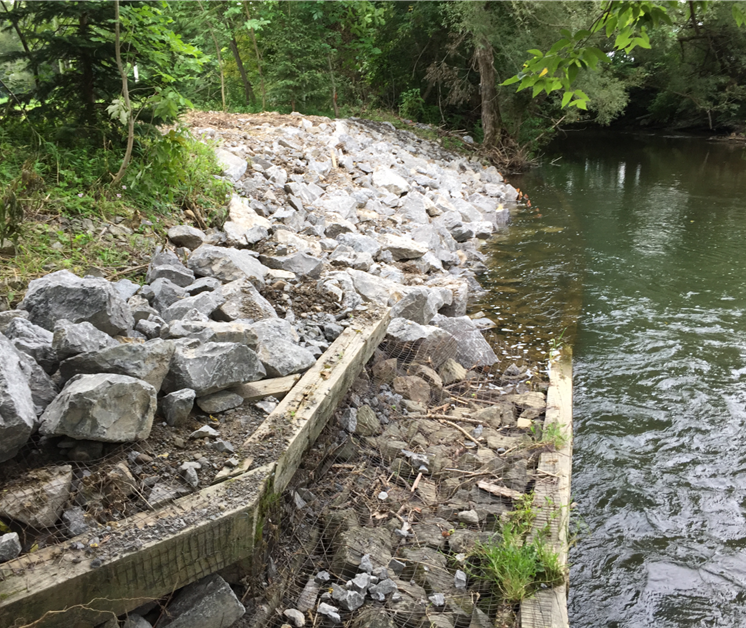
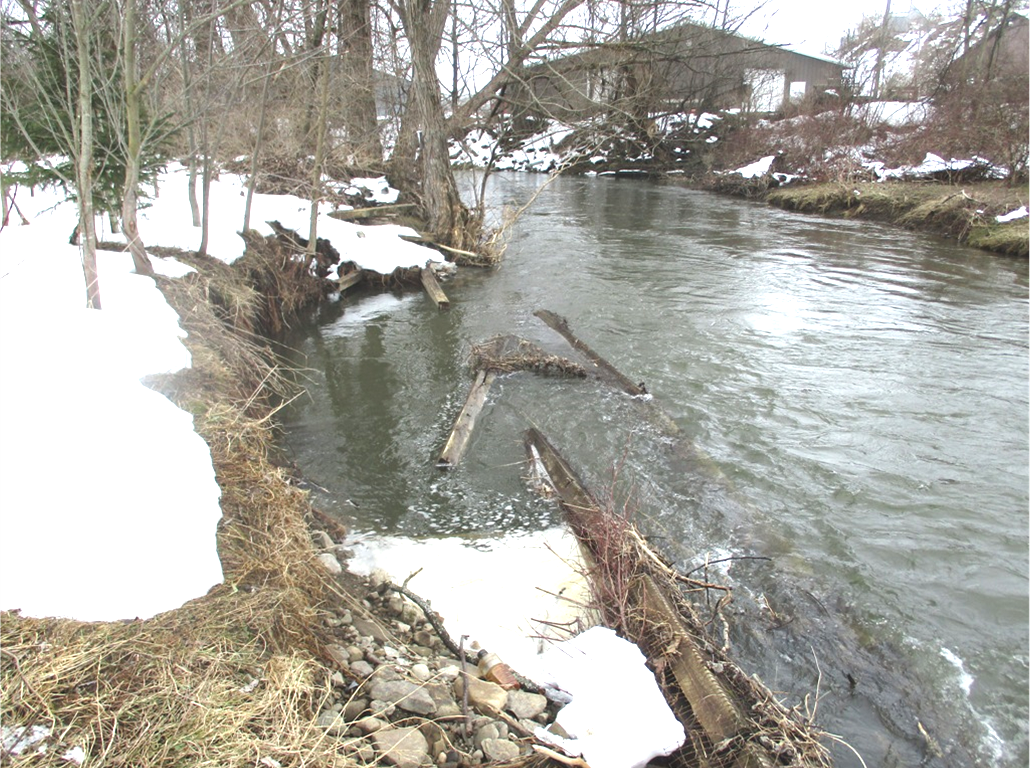
A preconstruction photo taken on May of 2018 shows the streambank erosion on the Wiscoy Creek, loss of land and flood issues were the main concern. The bank was lined with rock rip rap and trout lunkers were installed to increase fish habitat in August of 2018. Live stakes were planted to continue bank stabilization in the future.
Abbott Road Ditch Stabilization Project- Abbott Rd, Town of Castile
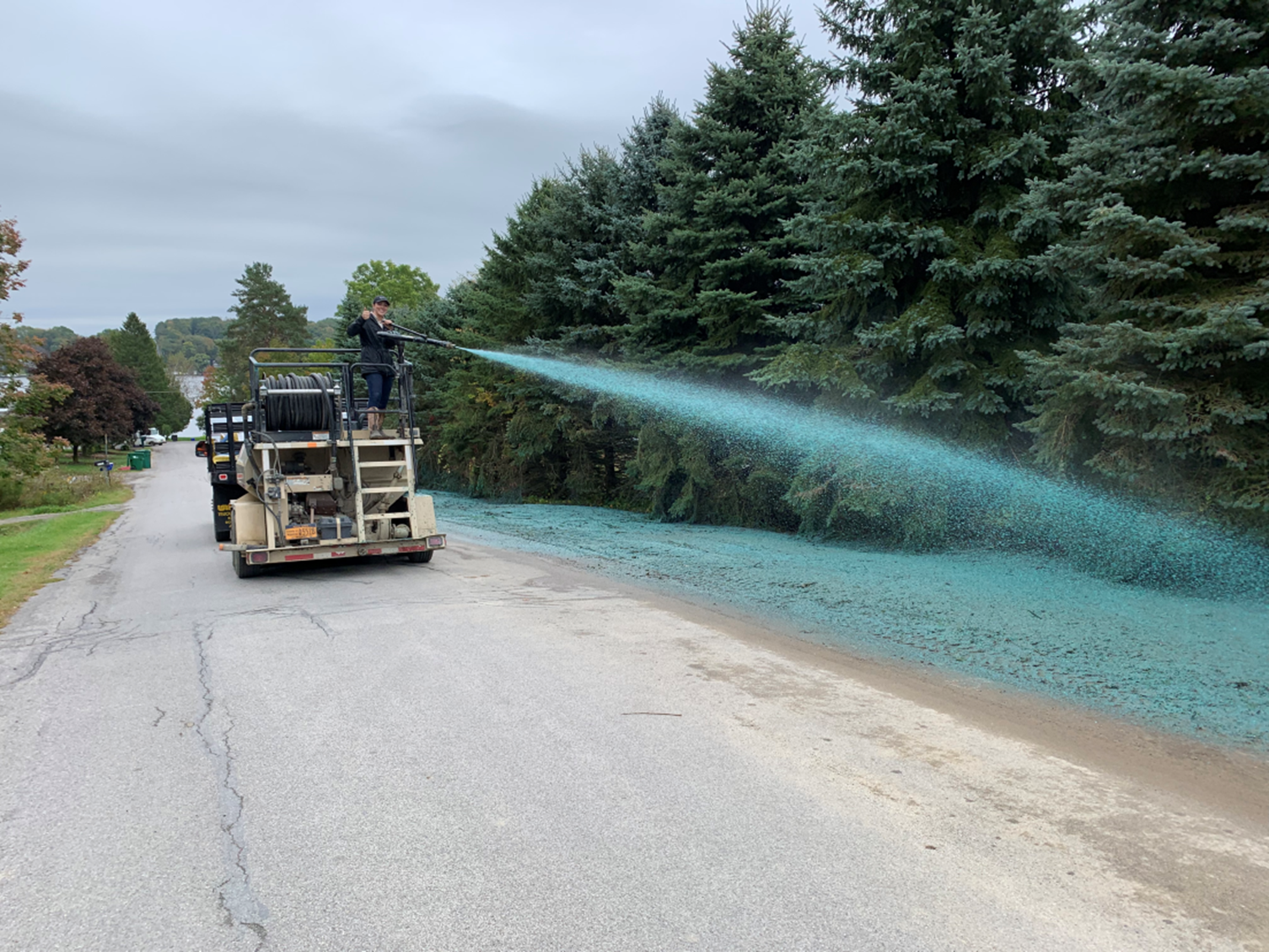
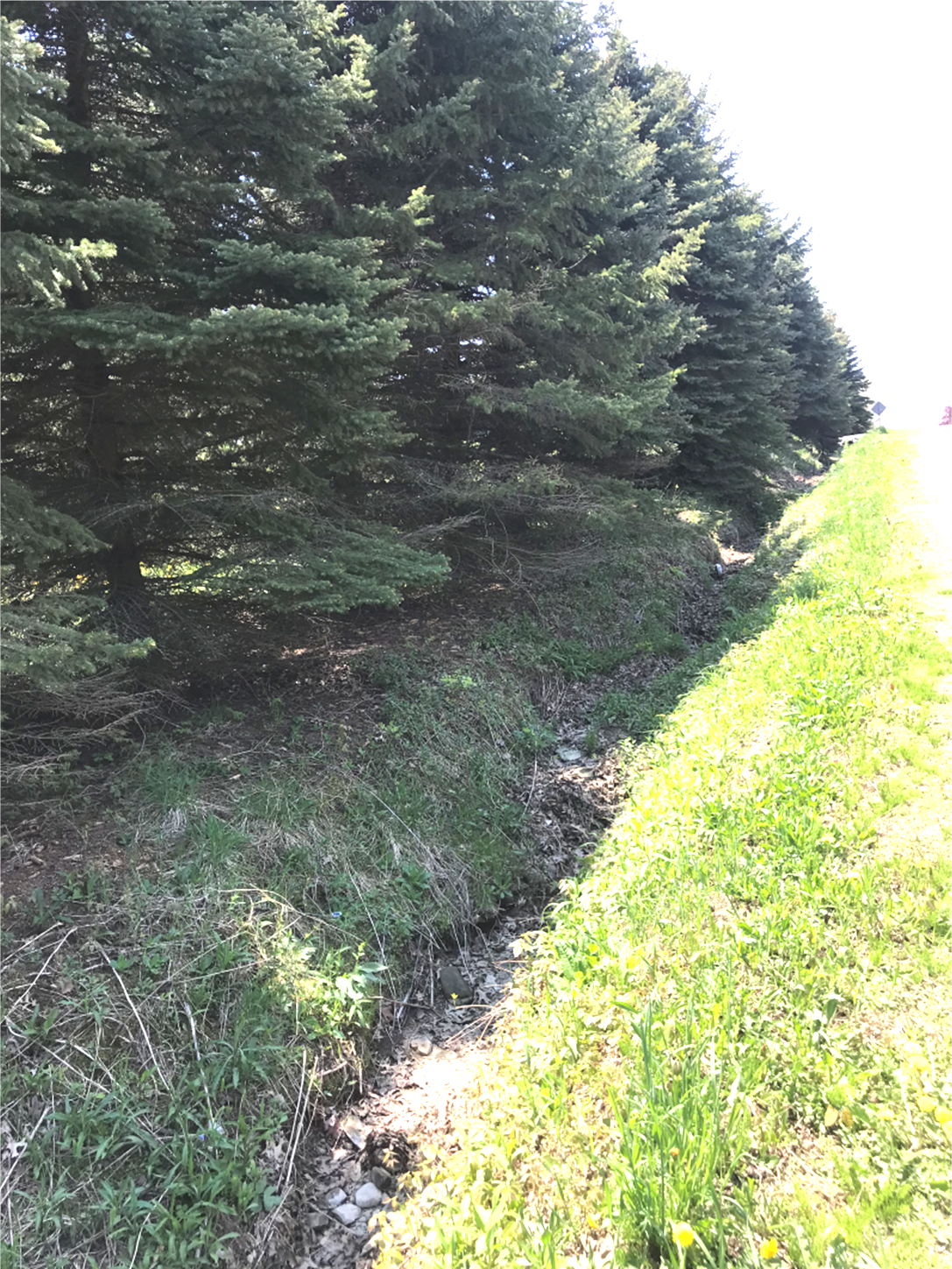
Prior to construction in September of 2018, the road ditch on Abbott Road frequently overtopped and showed signs of erosion. The ditch drains directly into Silver Lake and is a high priority to prevent further sedimentation.The Town of Castile piped the road ditch drainage underground and WCSWCD hydroseeded the project to stabilize the disturbed soils. The project was completed in September of 2019.
Stream Crossing and Livestock Exclusion- Stoney Creek, Town of Warsaw
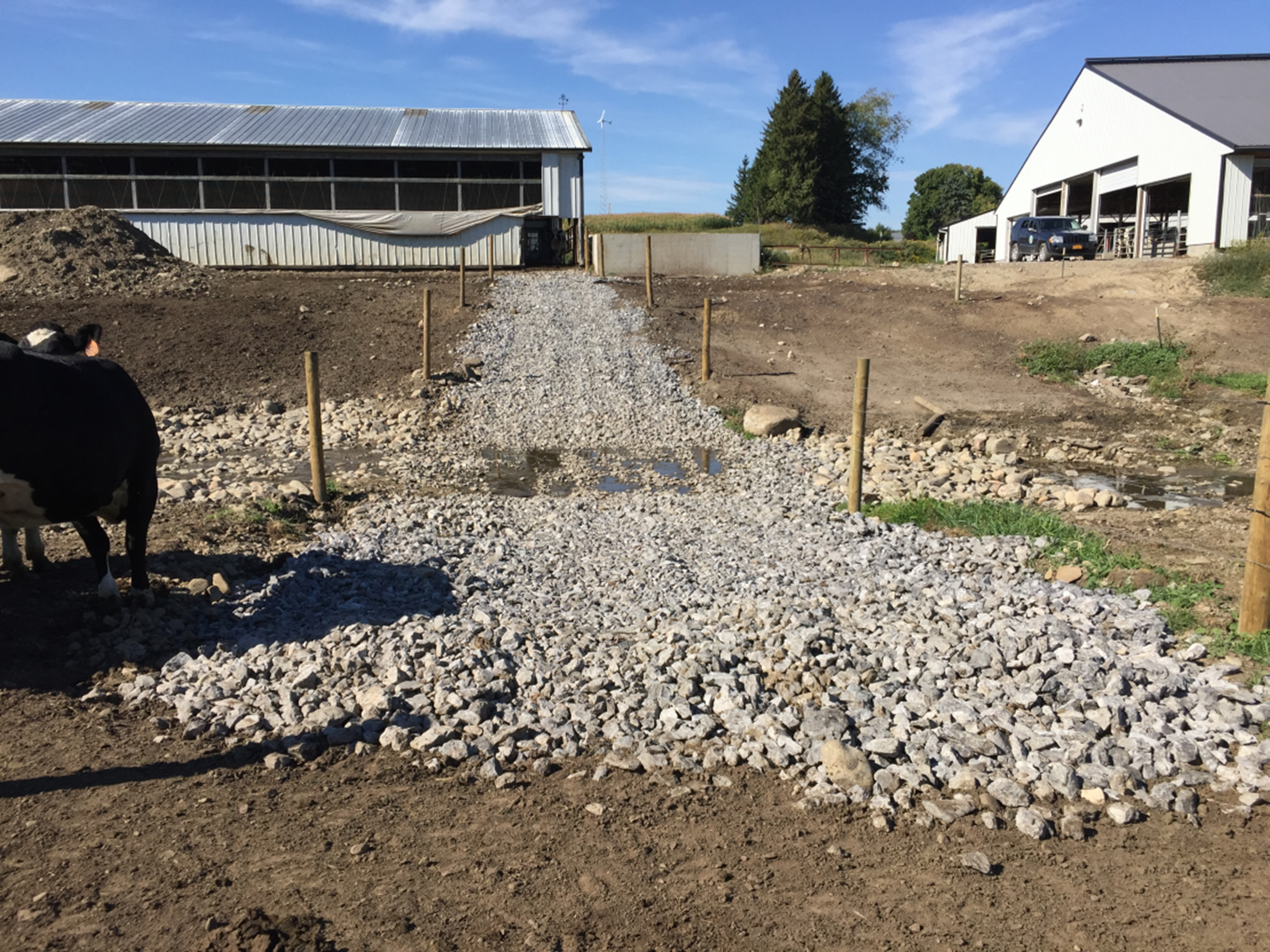
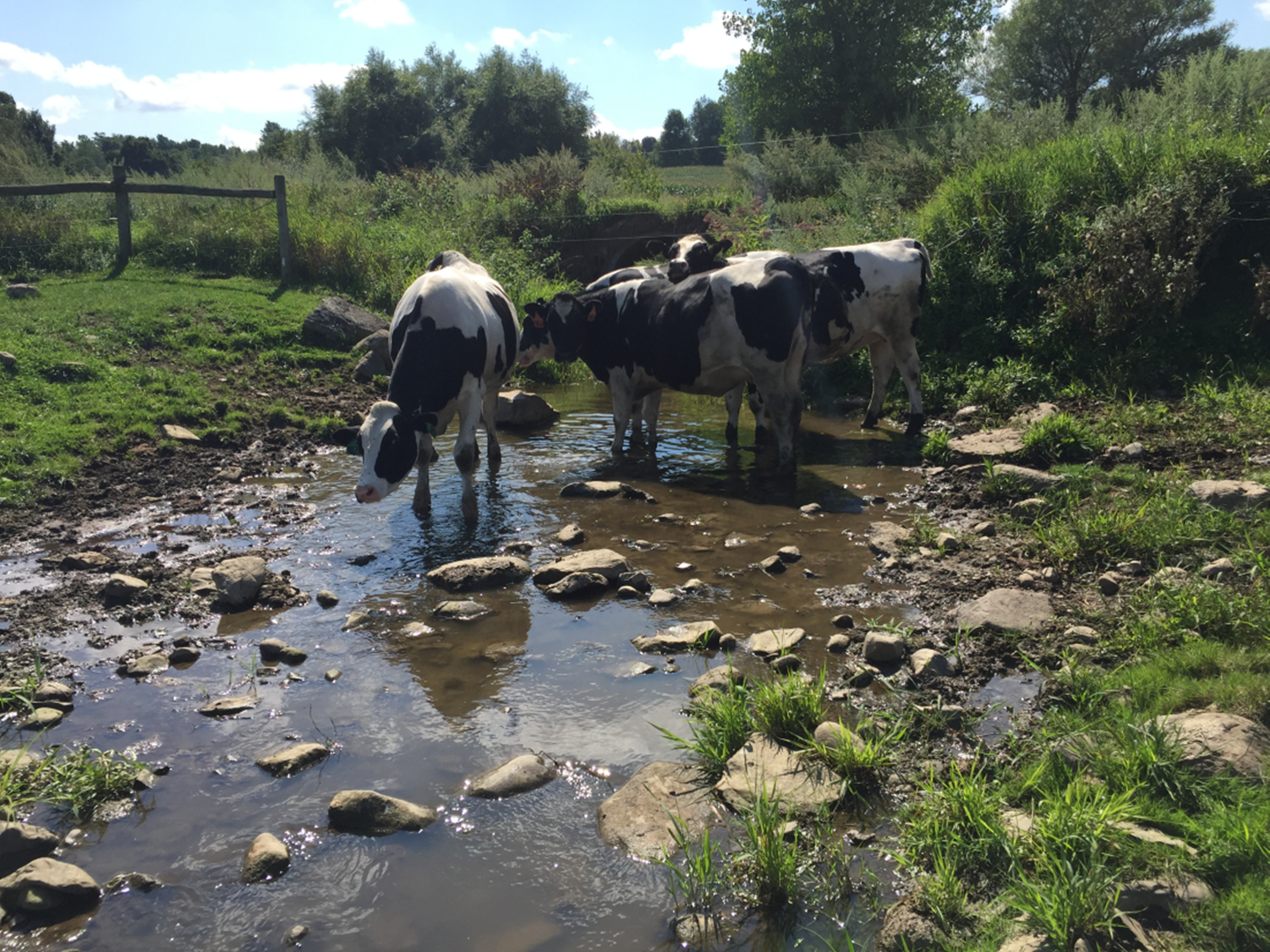
Dairy cows with free access to Stoney Creek at Stoney Creek Dairy Farm, LLC. A proposed livestock crossing and livestock exclusion would reduce erosion, nutrient input, and improve the water quality downstream. The crossing was completed with the addition of fencing to exclude livestock from the rest of the creek.
East Koy Streambank Stabilization- Shearing Road, Town of Gainesville
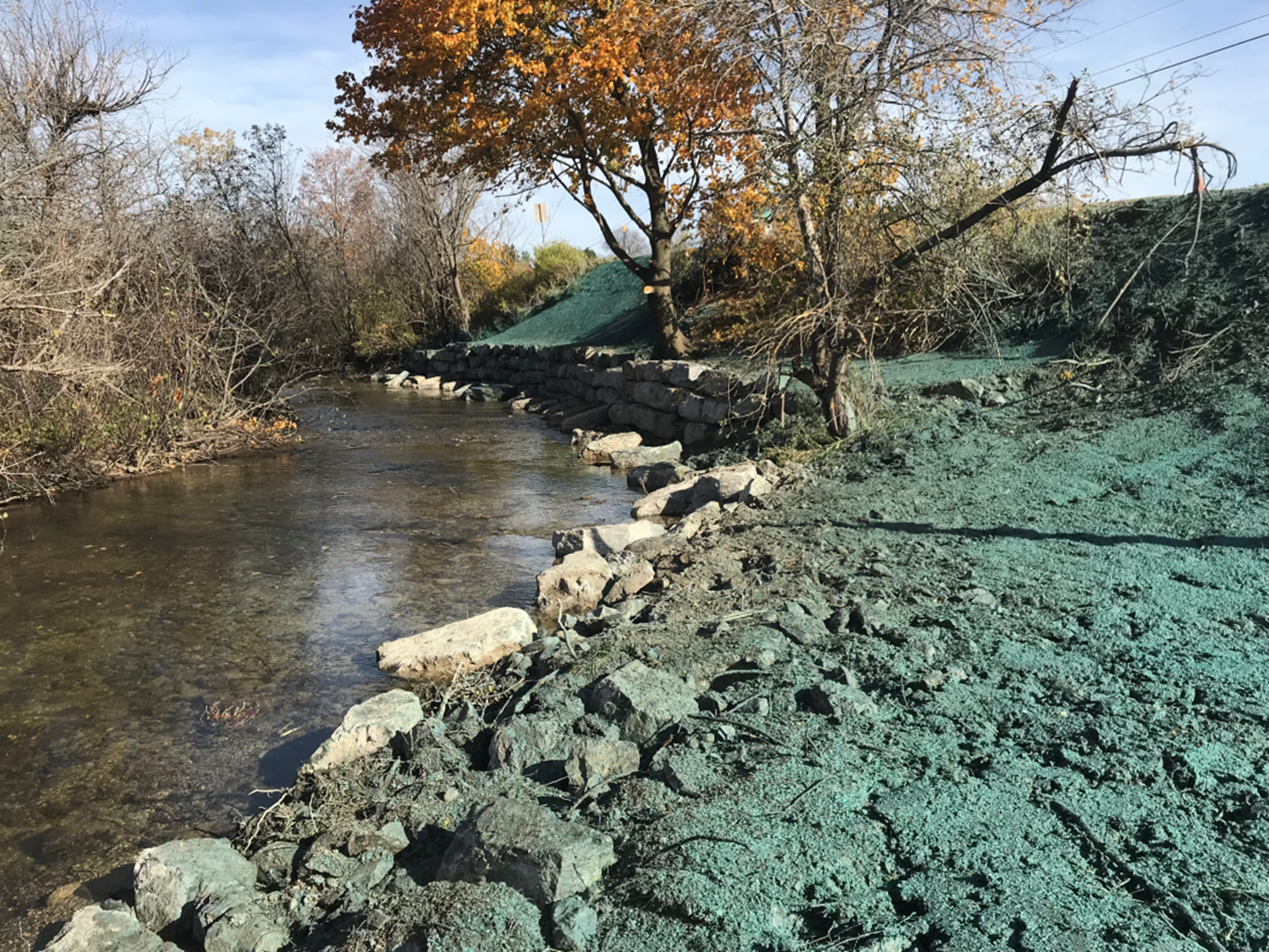
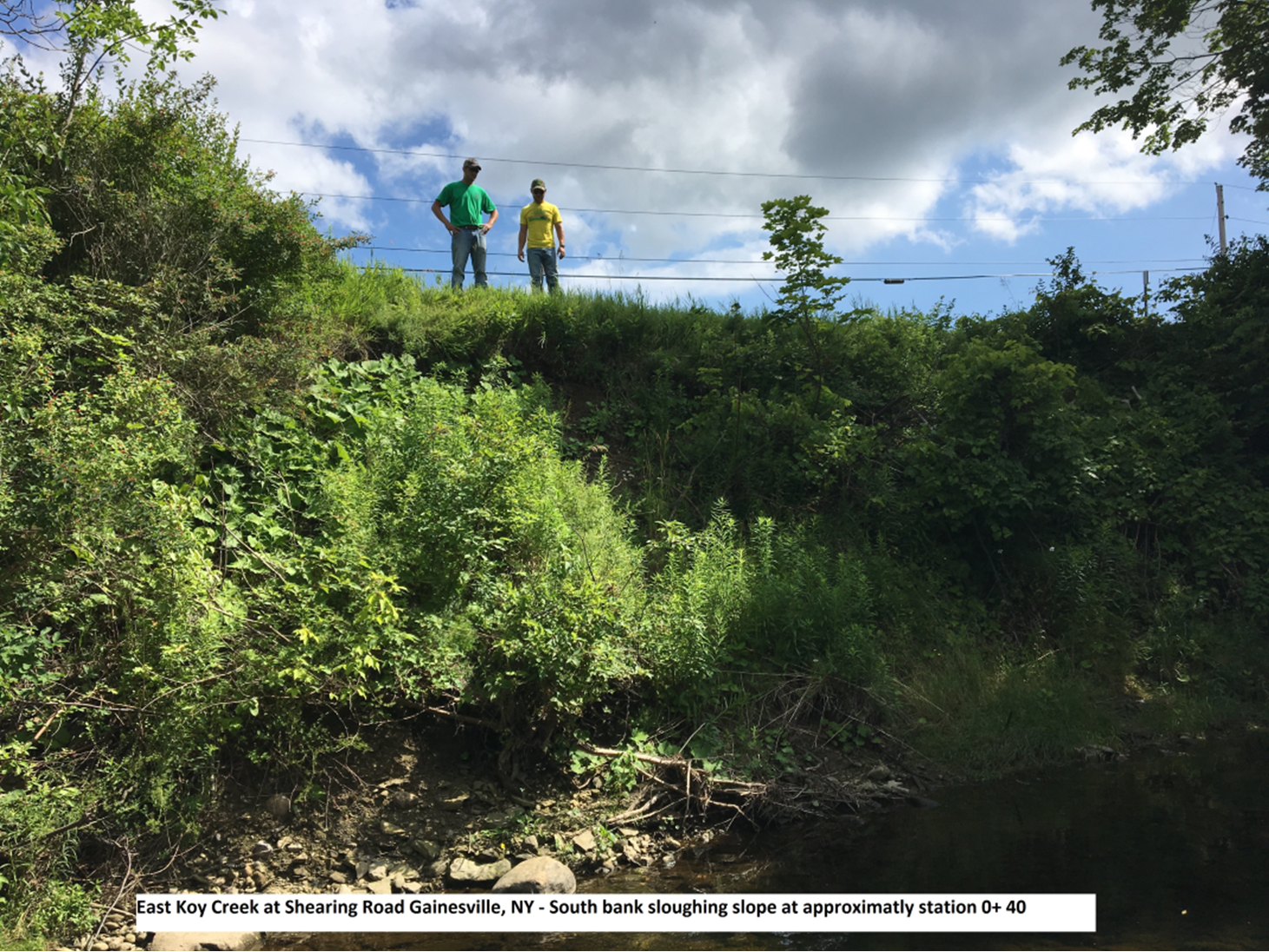
Streambank erosion and slope failure on the road-side bank of the East Koy Creek on Shearing Road in the Town of Gainesville in July of 2017.The completed streambank protection included approximitly 135 feet of stacked rock wall and deflection rocks. Hydroseeding on the banks was a vital part of the project to reduce further erosion.
